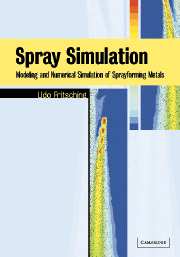8 - Summary and outlook
Published online by Cambridge University Press: 10 August 2009
Summary
The influence and importance of numerical models and simulations in science and engineering as appropriate tools for:
analysis of engineering processes, as well as for
conception and design of processes, and the
development and analysis of control mechanisms,
has rapidly increased in recent years. In some technical research and development areas, simulation has been employed as an important contribution, given identical ranking as experiment and theory. This influence is valid not only in universities and research laboratories, but also in industry.
This technical progress of numerical simulation tools is based on ongoing rapid developments that have been achieved in hardware and numerics, and also on some important developments in modelling of physical and technical processes. These models can be incorporated and implemented into simulation codes that become easy to use. In recent developments in this area, similar success compared to experimental or physical measurement techniques have been achieved.
The possibility of using a simulation model to decouple some of the physical effects and mechanisms involved in a complex technical process, which may only be sequentially analysed by experimental means, highlights the potential of this new analytical approach. Here physical understanding of complex processes may be derived and used to optimize and develop processes. This contributes not only to scientific understanding, but also to economic and ecological technical innovations.
As an example of modelling and numerical process simulation, in this book fluid atomization processes and the spray forming of metals have been investigated, with particular reference to transport and exchange processes within multiphase flow, including momentum, heat and mass transfer.
Information
- Type
- Chapter
- Information
- Spray SimulationModeling and Numerical Simulation of Sprayforming metals, pp. 243 - 244Publisher: Cambridge University PressPrint publication year: 2004
